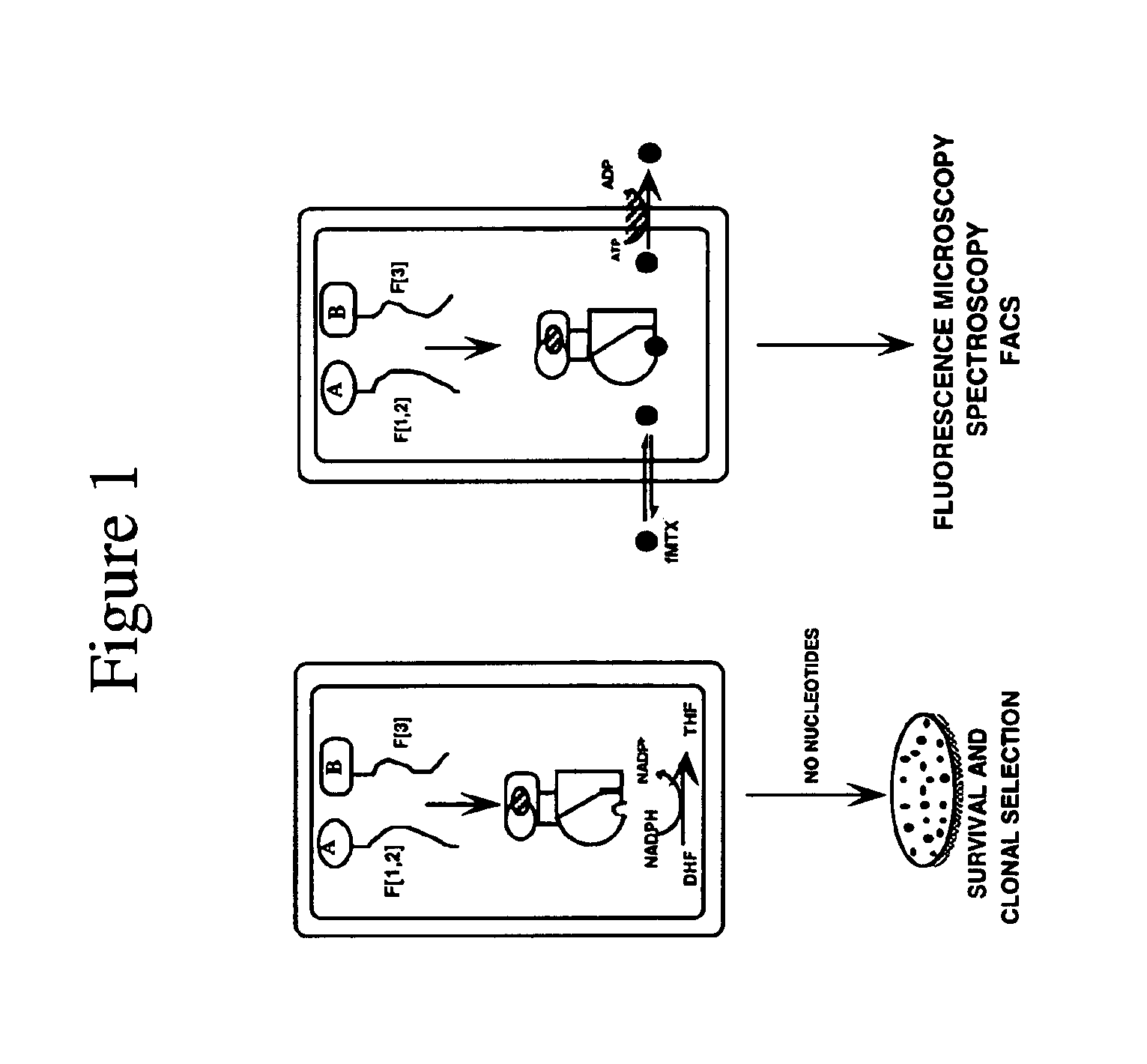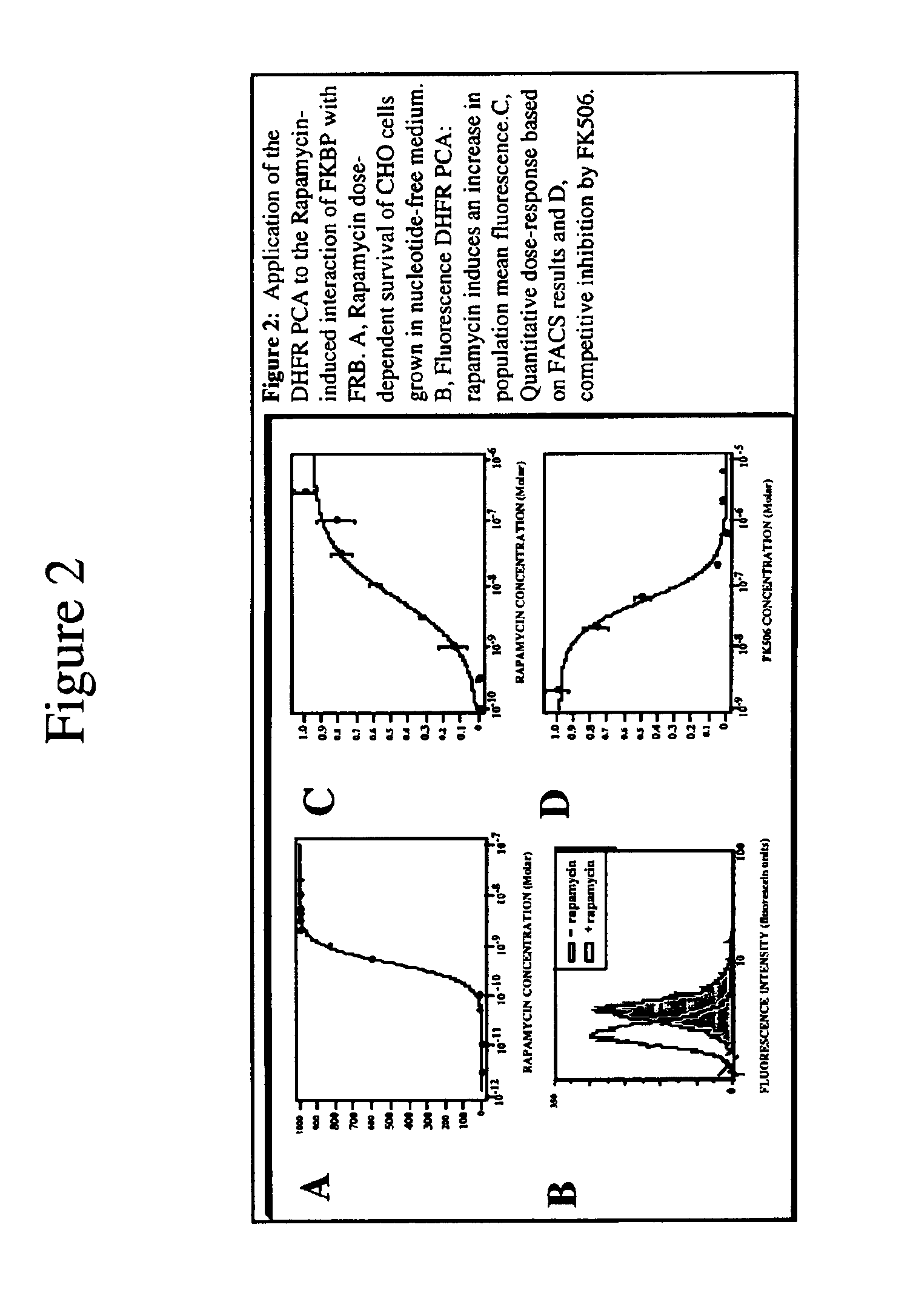Mapping molecular interactions in plants with protein fragments complementation assays
a technology of protein fragments and molecular interactions, which is applied in the field of mapping molecular interactions in plants with protein fragments complementation assays, can solve the problems of significant experimental challenge, undiscovered function of the majority of newly discovered genes, and ‘expression cloning’
- Summary
- Abstract
- Description
- Claims
- Application Information
AI Technical Summary
Benefits of technology
Problems solved by technology
Method used
Image
Examples
example 1
DNA Constructs: Genes were expressed in plant protoplasts under the control of a promoter containing two Cauliflower Mosaic Virus (CaMV) 35S enhancer elements. A plasmid containing this promoter was derived from the vector pBI221 (Clontech) by replacing the single 35S enhancer element of this vector by the double 35S enhancer element (tandem repeat of the single 35S element) of plasmid pBIN35S (gift of Dr. Daniel Matton, Université de Montréal). The resulting vector, called pBI223D, was used to construct all the plasmids required for the PCA. Sequences of the GCN4 leucine zipper-forming sequences fused to the mDHFR fragments F[1,2: Phe31Ser] and F[3] were isolated from plasmids pMT314 and inserted as Not1 and Xba1 fragments in pBI223D. FRB-F[1,2: Phe31Ser] and FKBP-F[3] fragments were isolated from plasmids pMT3 as Not1 and Xba1 fragments in pBI223D. DNA clones for Arabidopsis thaliana NPR-1 and TGA2 were obtained from Dr. Pierre Fobert, Plant Biotechnology Institute, Saskatoon and ...
example 2
Protoplasts isolation and electroporation: Leaf mesophyll protoplasts were isolated from 6-week-old in vitro grown potato plants cv. Kennebec or Nicotiana tabacum cv. Xanthi. The protoplast isolation procedure and culture media are as described, except for the enzymatic solution which contained 0.8% w / v cellulysin and 0.1% w / v macerase.18,19 Electroporation of protoplasts was conducted with a home-made capacitor discharge system, using the disposable electroporation chambers (0.4 cm) of the Cell-Porator System of Gibco-BRL (Gaithersburg, Md.). The electrical pulse was delivered from a 1000 μF capacitor charged at 125 V. Pulses from the electroporator were delivered to 320 μl of protoplasts (6×105 protoplasts / ml) to which was added 80 μl of a solution containing 20 mM HEPES, 300 mM NaCl, 10 mM CaCl2, 770 mM mannitol and 15 ug CsCl purified supercoiled plasmid DNA for each of the DHFR fusion constructs, plus 10 ug of the plasmid pBI221. This plasmid contains the E. coli uidA gene, enc...
example 3
DHFR PCA: Following electroporation, the protoplasts were left on ice for 10 min and then transferred to petri dishes containing 3.5 ml of culture media supplemented with 50 uM 3,4-dehydro L-proline (DHP). A 1 ml aliquot was set aside for measuring GUS activity.20 The rest of the protoplasts were centrifuged 10 min at 1500 g and resuspended in 1 ml culture media containing 50 uM DHP and 10 uM fluorescein-methotrexate (Molecular Probes). When present, rapamycin was added at a 10 nM final concentration. Salicylic acid (SA) was added at concentrations varying from 0 to 500 uM. Protoplasts were incubated at room temperature for 18 h in the dark and harvested by centrifugation as above. They were resuspended in 1 ml culture medium, collected again by centrifugation and washed twice at 37° C. for 30 min in the same culture medium containing, when required, rapamycin or SA at the appropriate concentrations. Protoplasts were then washed once in 100 mM sodium phosphate buffer (pH 7.5) contai...
PUM
| Property | Measurement | Unit |
|---|---|---|
| pH | aaaaa | aaaaa |
| pH | aaaaa | aaaaa |
| concentration | aaaaa | aaaaa |
Abstract
Description
Claims
Application Information
 Login to View More
Login to View More - R&D
- Intellectual Property
- Life Sciences
- Materials
- Tech Scout
- Unparalleled Data Quality
- Higher Quality Content
- 60% Fewer Hallucinations
Browse by: Latest US Patents, China's latest patents, Technical Efficacy Thesaurus, Application Domain, Technology Topic, Popular Technical Reports.
© 2025 PatSnap. All rights reserved.Legal|Privacy policy|Modern Slavery Act Transparency Statement|Sitemap|About US| Contact US: help@patsnap.com



